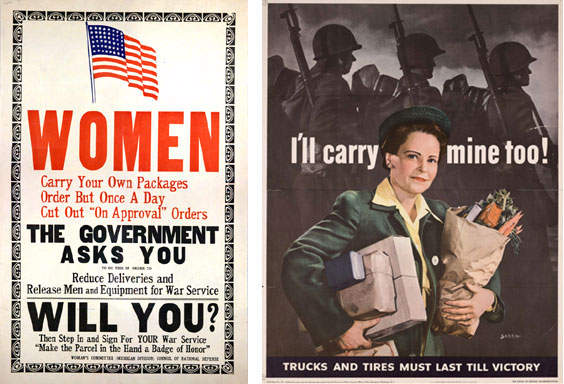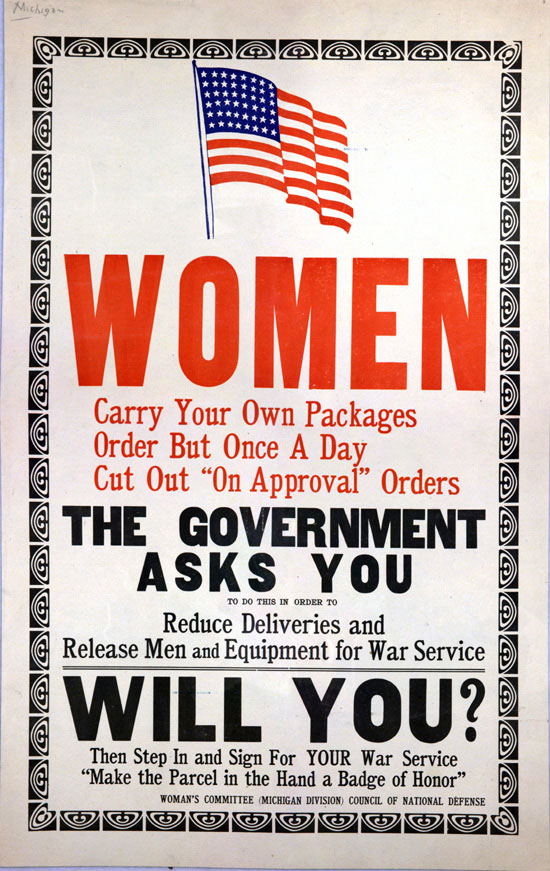Section 6 Image Gallery
Previous image |
Section Page | Next Image
Image 1 and 2
Poster Comparison:
WOMEN The Government Asks You, Will You? (WWI)
with
I'll Carry Mine Too! (WWII)
The OWI poster on the right targeted a similar audience with a similar message as the WWI poster on the left, but used a fifth of the verbiage (56 words compared to 11 words) to encourage women to carry their packages.
Images in war posters allowed the Ad Council to conflate support for the war with consumer spending and personal gain, but without the text ever mentioning it. The woman in the poster on the right did not just demonstrate patriotic tire-saving behavior; she also displayed business-friendly shopping behavior.
Advertisers had learned that reason need not be emphasized when addressing a mass audience, and in fact, it should probably be disguised, without appearing so, wherever possible. Images helped serve this purpose, and by the 1940s, ad men were convinced that pictures relayed their messages better than copy. One ad executive concluded, “the eye gets the facts quicker and more graphically than the mind.” 21
The earlier, “reason-why” posters from WWI referred directly to a time of war, famine and sacrifice. Later, in the WWII posters, war and somber calls to duty had been replaced with a “blissful clarity” that is not an explanation or a rationalization of complicated facts, or in this case, of global events. The WWII posters provided a clarity that comes not with questions, but with statements of fact that photographic imagery seemed to supply. 26
Michigan State Council of Defense, c.1917 and OWI, c.1944.
Source: Special Collections, National Agricultural Library and WWII Poster Collection, University of North Texas


